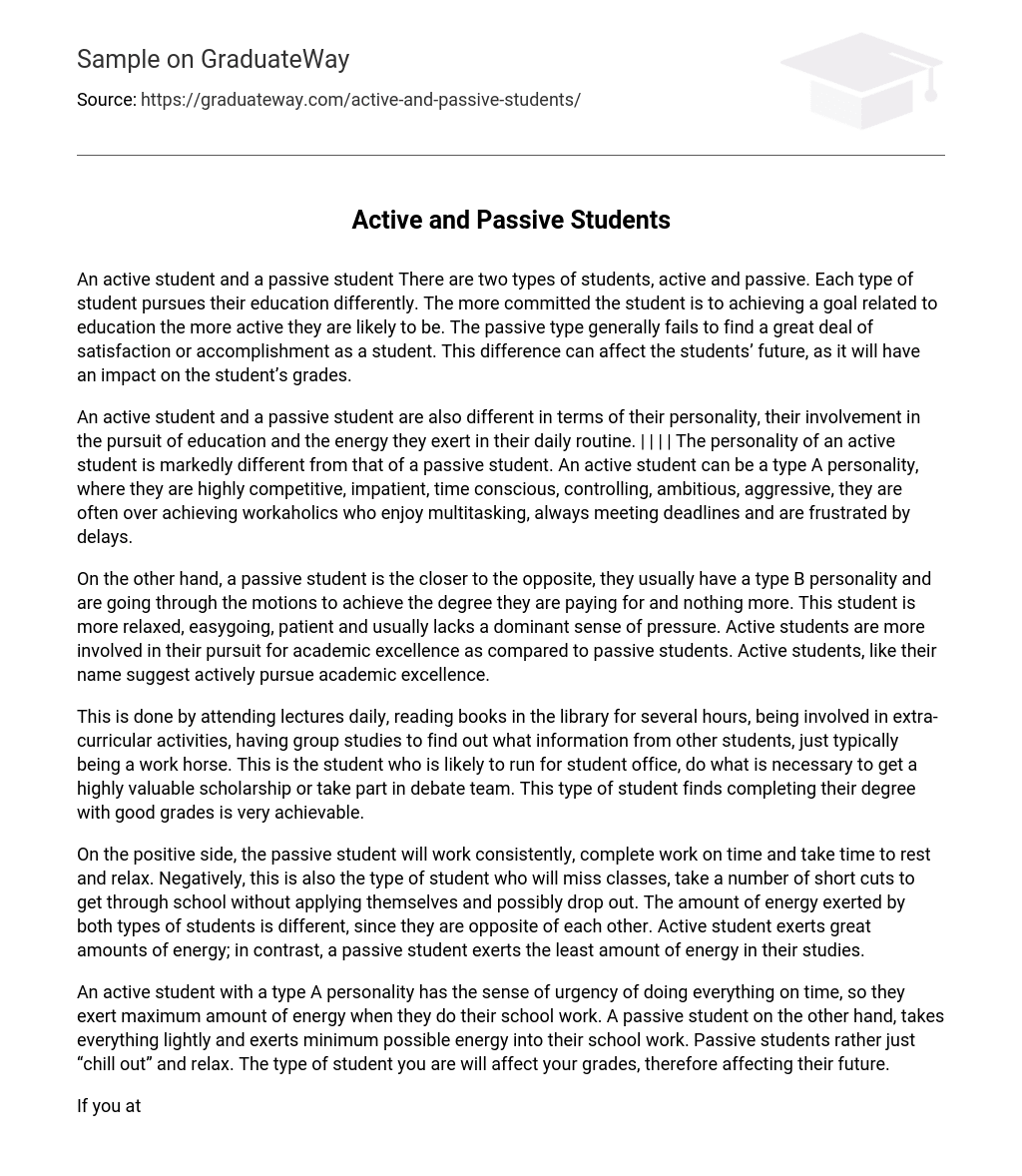There are two types of students: active and passive. These students approach their education in different ways. The level of commitment to academic goals determines how active or passive a student is. In contrast, passive students generally feel less satisfied and accomplished. This distinction can greatly impact their future prospects, including their grades.
The personality, involvement in education, and daily energy exertion distinguish an active student from a passive student. An active student typically possesses the characteristics of a type A individual – highly competitive, impatient, time-conscious, controlling, ambitious, and aggressive. They are often workaholics who excel in multitasking, meeting deadlines, and are easily frustrated by delays.
An active student is the antithesis of a passive student. An active student displays great involvement and dedication to attain academic brilliance. They possess a type A personality and exert additional effort to thrive in their studies. Conversely, a passive student possesses a type B personality and merely goes through the motions to acquire their degree without exerting significant effort. They are more laid-back, easygoing, and lack pressure.
This can be achieved by regularly attending lectures, spending several hours in the library reading books, participating in extra-curricular activities, collaborating with peers for group studies to acquire additional information, and having a diligent work ethic. This kind of student is also likely to seek student government positions, actively pursue highly valuable scholarships, and engage in debate competitions. Such students see obtaining their degree with high grades as an attainable goal.
While the passive student has positive attributes such as consistently completing work on time and taking time to rest, there are also negative aspects. They may miss classes, take shortcuts to avoid effort, and possibly drop out of school. The energy exerted by active and passive students differs greatly, with active students putting in a great amount of energy compared to the minimal effort put forth by passive students.
The academic performance and future of a student are greatly influenced by their level of activity. Active students, characterized by type A personalities, have a strong sense of urgency and consistently put in significant effort to complete tasks promptly. Conversely, passive students take a more laid-back approach, investing minimal energy into their academic responsibilities while prioritizing relaxation and unwinding.
Having good study habits and valuing one’s work from a young age has lifelong advantages, which are applicable in both high school and higher education. It is essential for all individuals to aim towards becoming engaged students, with each student taking responsibility for recognizing the importance of comprehending and mastering the elements required for passive and active learning.





